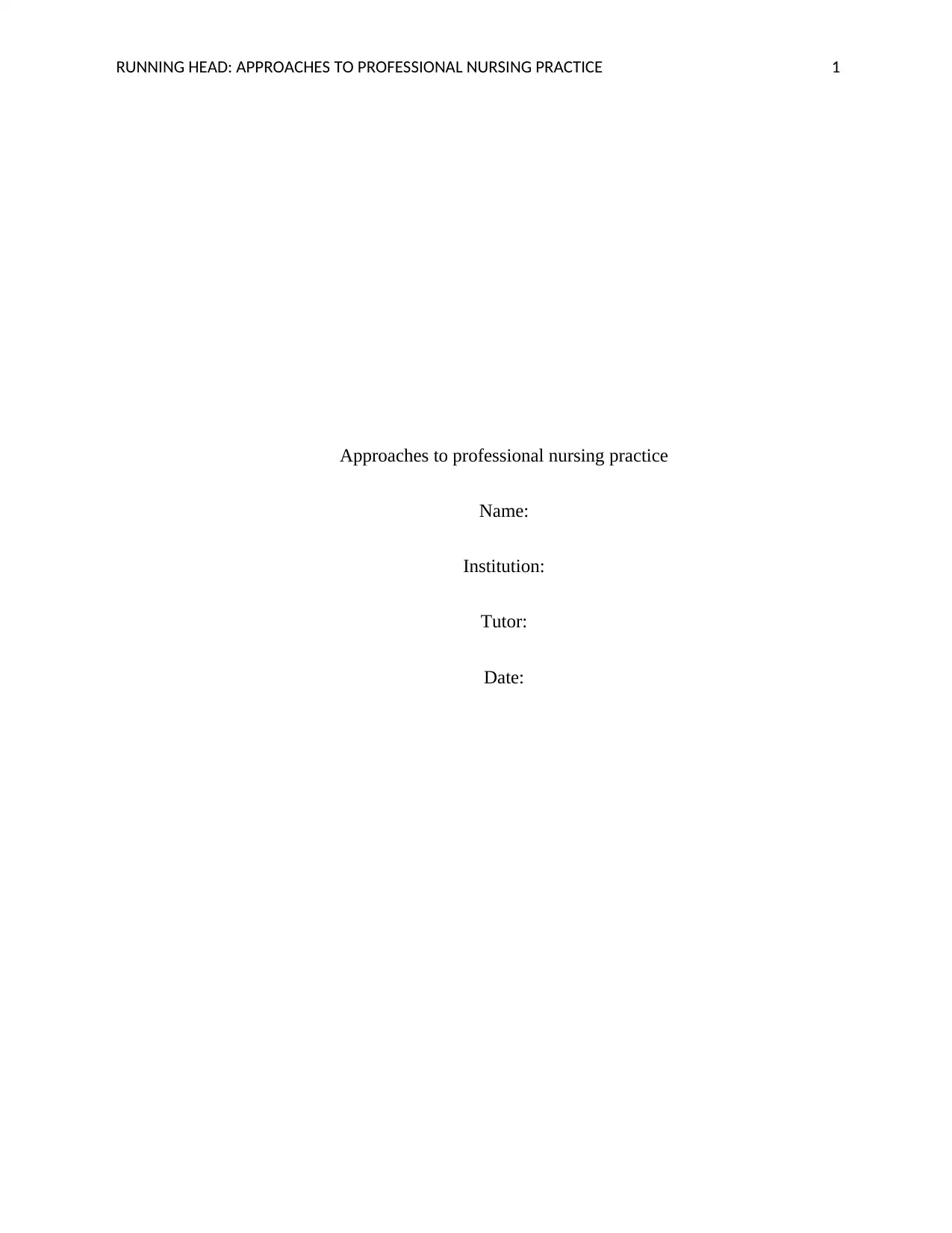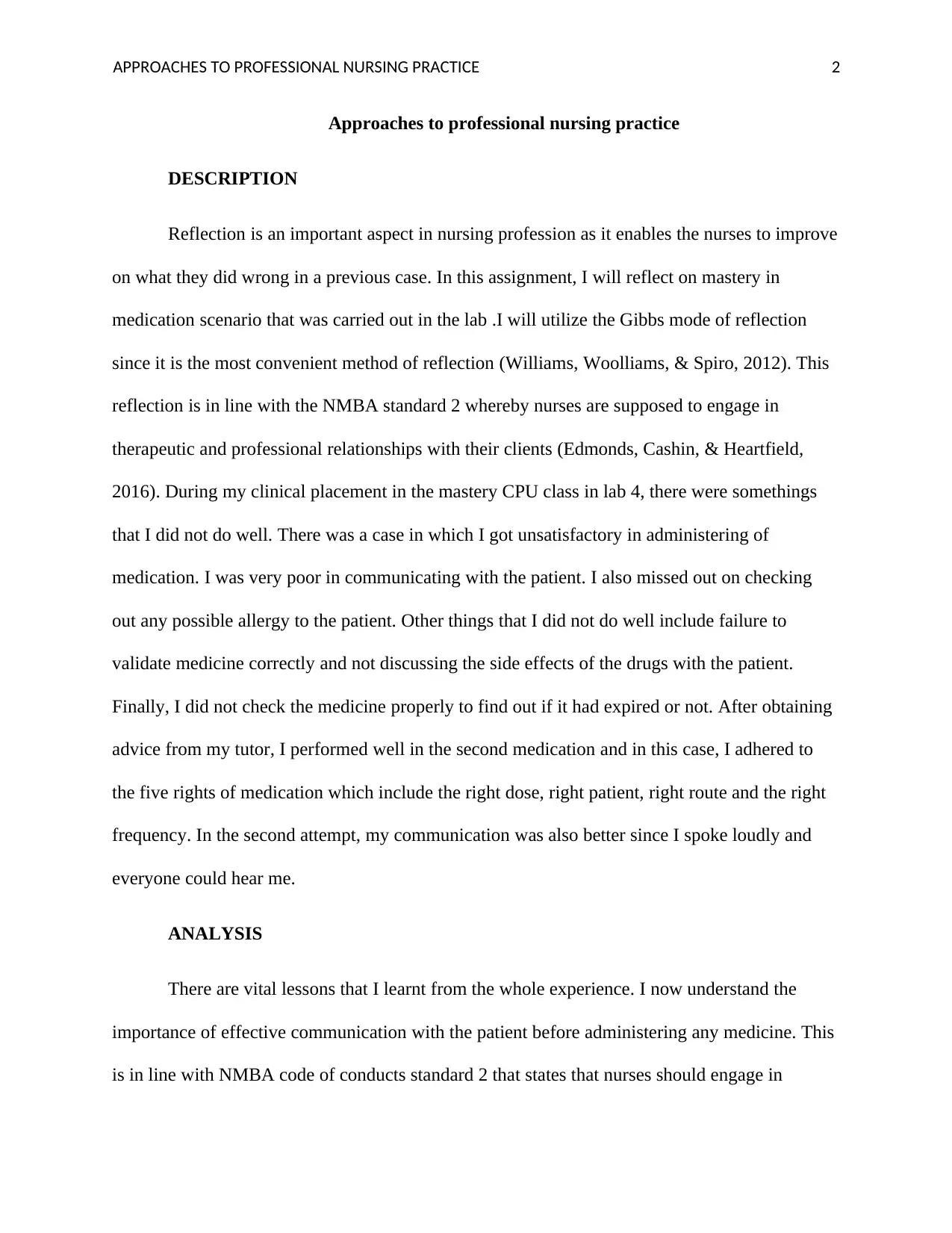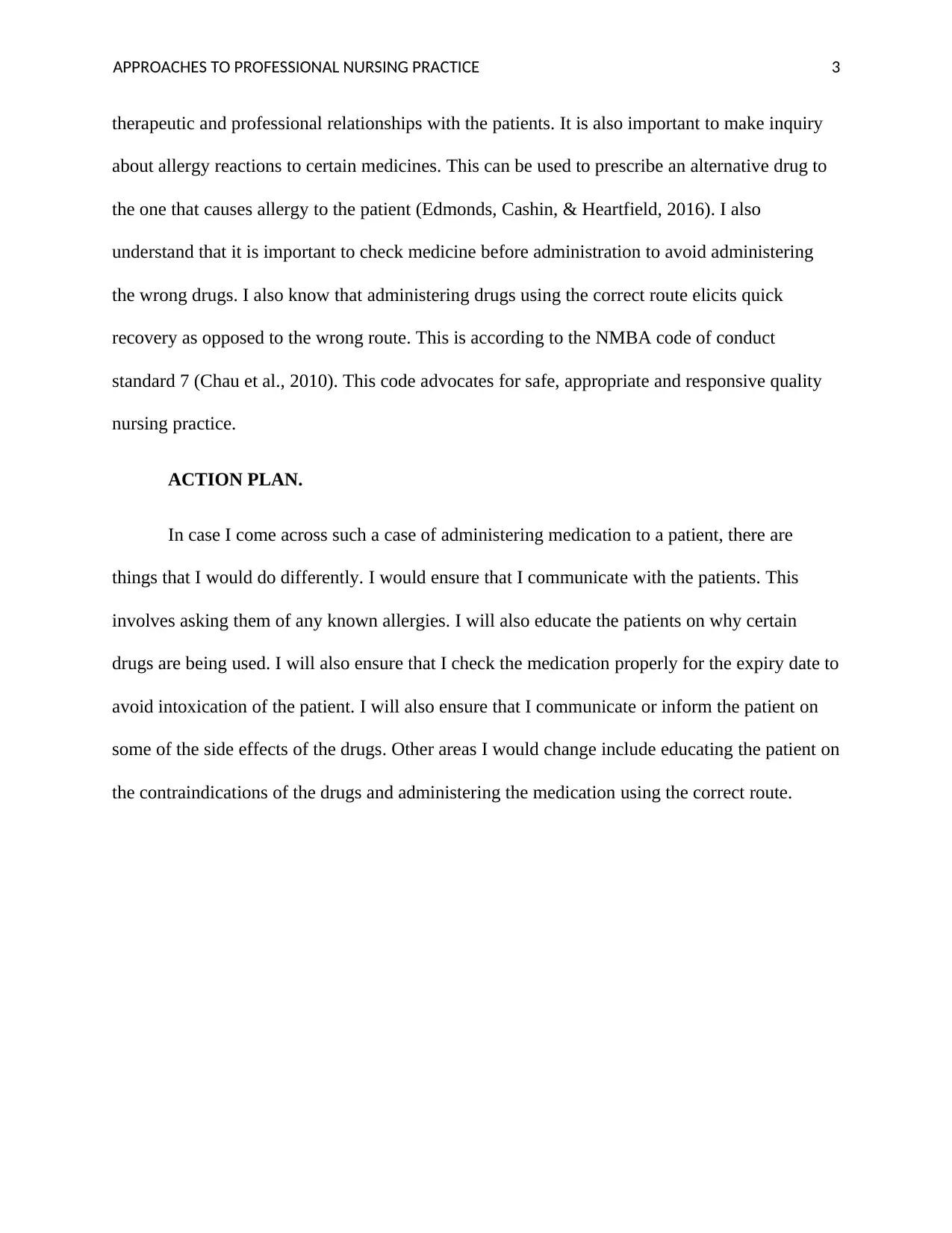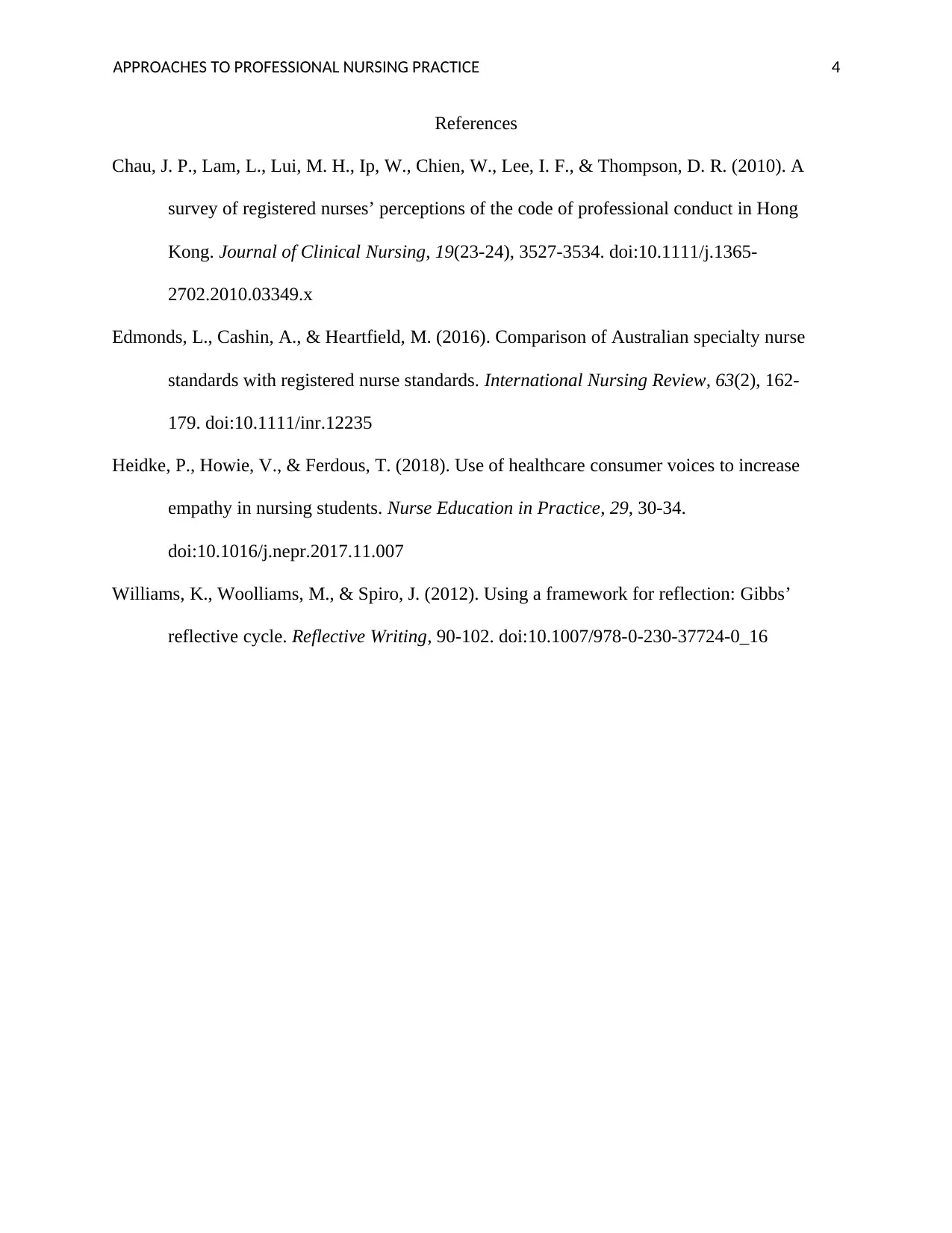Professional Nursing Practice Approaches: A Reflective Report Analysis
VerifiedAdded on 2023/06/03
|4
|792
|259
Report
AI Summary
This report is a reflective analysis of a nursing student's experience in a medication administration scenario, utilizing the Gibbs reflective cycle. The student reflects on a clinical placement in a lab setting, focusing on areas of improvement in communication, allergy checks, medication validation, and patient education regarding side effects and expiry. The report analyzes the importance of effective communication, allergy assessment, and adherence to the five rights of medication administration, aligning with NMBA standards. The student outlines an action plan for future scenarios, emphasizing improved patient interaction, medication checks, and education on drug contraindications and routes of administration. References to relevant literature like Chau et al., Edmonds et al., and Williams et al. support the reflection.
1 out of 4











![[object Object]](/_next/static/media/star-bottom.7253800d.svg)